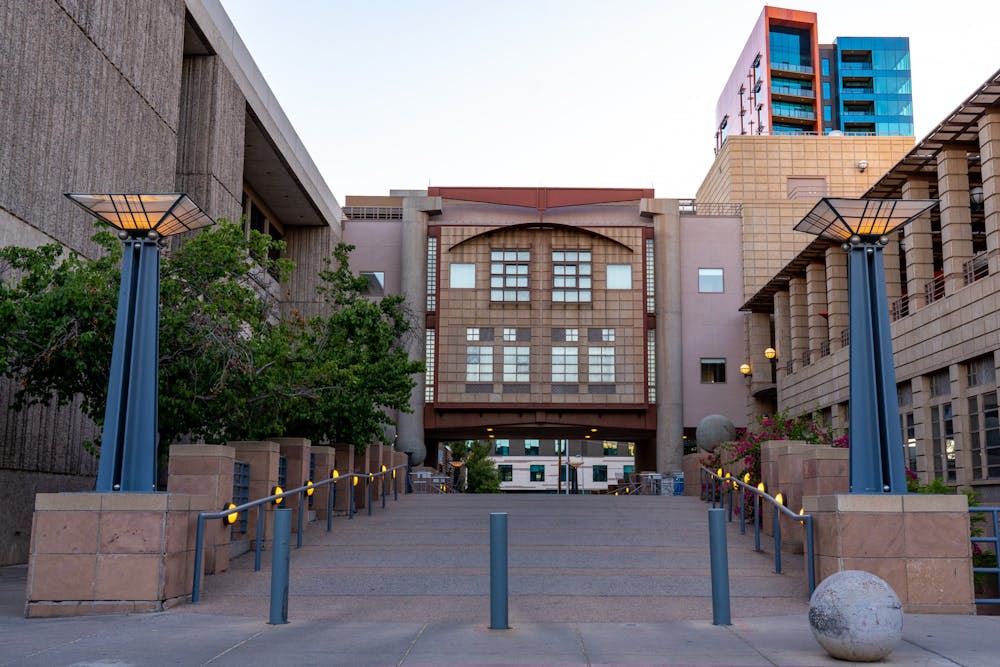ASU's architecture program is redesigning its degrees to improve student accessibility in hopes of creating a ripple effect in a field predominately white and male. The changes to The Design School's architecture program include a more flexible undergraduate major map, a streamlined graduate program and the introduction of an online master’s degree.
Starting in Fall 2021, students will be able to take courses out of order and be in multiple studio courses at the same time, allowing flexibility for transfer students, study abroad opportunities and more.
"It's in the mindset of ASU that you 'architect' something, it's a verb," architecture program head Marc Neveu said. "And that means you constructively strategize and develop and implement. That's what an architect can do."
Matt Ransom, senior academic advising success coordinator, said the rigidity of the undergraduate path to graduation was a part of the barrier to access the architecture program’s degrees. Previously, the non-accredited program was strictly eight semesters long, regardless of whether a student transferred in or changed their major.
Instead of having no choice in what classes to take to fulfill all of their requirements, students can follow their own interests within architecture more closely, from hands-on, project-based classes to history and theory, Ransom said.
Ransom said the changes to the program will hopefully encourage a more diverse group of students to obtain a bachelor’s degree in architecture from the University. Fewer than one in five new architects identify as a racial or ethnic minority, according to the National Council of Architectural Registration Boards.
"Ethnic diversity has been something of an issue, where our student body doesn't reflect the diversity that the ASU student body reflects," Ransom said.
According to a Fall 2020 report by the University, 26.2% of undergraduates were Hispanic/Latino, 8% were Asian, 4.3% were Black, 1.2% were Indigenous, 0.2% were Native Hawaiian/Pacific Islander and 46.6% were white.
The master’s program will follow suit in adding flexibility; graduate students will be able to take 12 credits per semester, allowing them to have a few days a week without classes, said Christy Brown, graduate coordinator in The Design School.
Because the program is accredited, the requirements of the courses will remain the same, but "things have just been shifted around to make things more condensed, more concise to make it easier for students, especially because grad students are often working," Brown said.
The architecture program will also be introducing online master's degrees, with a three-year Master of Architecture program coming in the fall and a two-year program set to launch next year, Brown said.
"Whether that's time or transportation, being able to do a program online asynchronously so that (students) can fit it in in the evenings, when they have time, or early mornings or on weekends, that just expands access to a whole new set of people who wouldn't have been able to come to campus," Brown said.
Even though the architecture program is expected to take on more new students in the coming semesters, the intimate feeling of the program will remain, Ransom said.
"The architecture program is still a relatively small program," Ransom said. "Students are going to be in small class sizes where you're still going to get to know peers in a way that you're going to make connections and you're going to feel like you're in a part of a neighborhood."
As the architecture program builds on all fronts, Neveu said, it is also seeking to increase diversity in the field in the future by developing a series of four courses: two lecture-based courses and two studio courses delivered to K-12 students.
He wants to provide those opportunities to show students that fields such as architecture, design, construction and others are a "world you can be in" and educate more than just college students.
"And we want to increase the diversity in the pipeline to (the) University by reaching out to underserved K-12 populations," Neveu said. "It's not just for people with money, but it's actually something that everybody can be a part of."
Reach the reporter at alcamp12@asu.edu and follow @Anna_Lee_Camp on Twitter.
Like The State Press on Facebook and follow @statepress on Twitter.
Continue supporting student journalism and donate to The State Press today.




